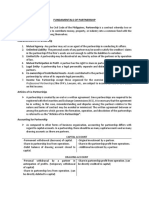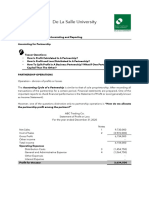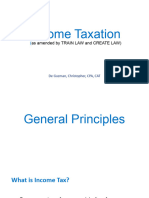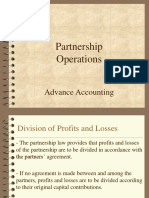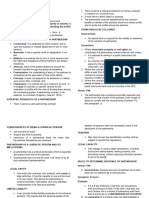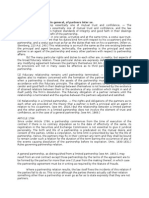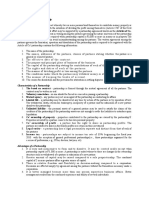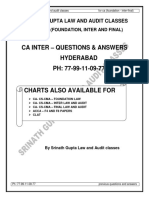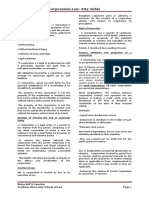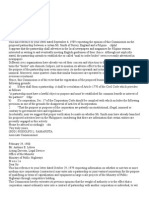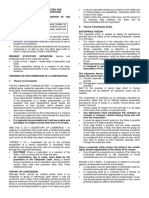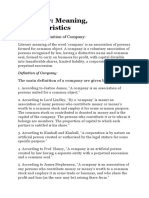0% found this document useful (0 votes)
221 views6 pagesUnit I and 2
1. A partnership is a contract between two or more persons to contribute money, property, or skills to a common business venture with the intention of sharing profits.
2. Partnerships require a written agreement if capital exceeds ₱3,000 that outlines details like the name, partners, capital contributions, profit/loss sharing, and dissolution terms.
3. There are different types of partnerships based on the business activity, partners' liabilities, duration, and contributions of capital versus labor. Accounting for partnerships requires separate capital and drawing accounts for each partner.
Uploaded by
harlene_luCopyright
© Attribution Non-Commercial (BY-NC)
We take content rights seriously. If you suspect this is your content, claim it here.
Available Formats
Download as PDF, TXT or read online on Scribd
0% found this document useful (0 votes)
221 views6 pagesUnit I and 2
1. A partnership is a contract between two or more persons to contribute money, property, or skills to a common business venture with the intention of sharing profits.
2. Partnerships require a written agreement if capital exceeds ₱3,000 that outlines details like the name, partners, capital contributions, profit/loss sharing, and dissolution terms.
3. There are different types of partnerships based on the business activity, partners' liabilities, duration, and contributions of capital versus labor. Accounting for partnerships requires separate capital and drawing accounts for each partner.
Uploaded by
harlene_luCopyright
© Attribution Non-Commercial (BY-NC)
We take content rights seriously. If you suspect this is your content, claim it here.
Available Formats
Download as PDF, TXT or read online on Scribd
/ 6



